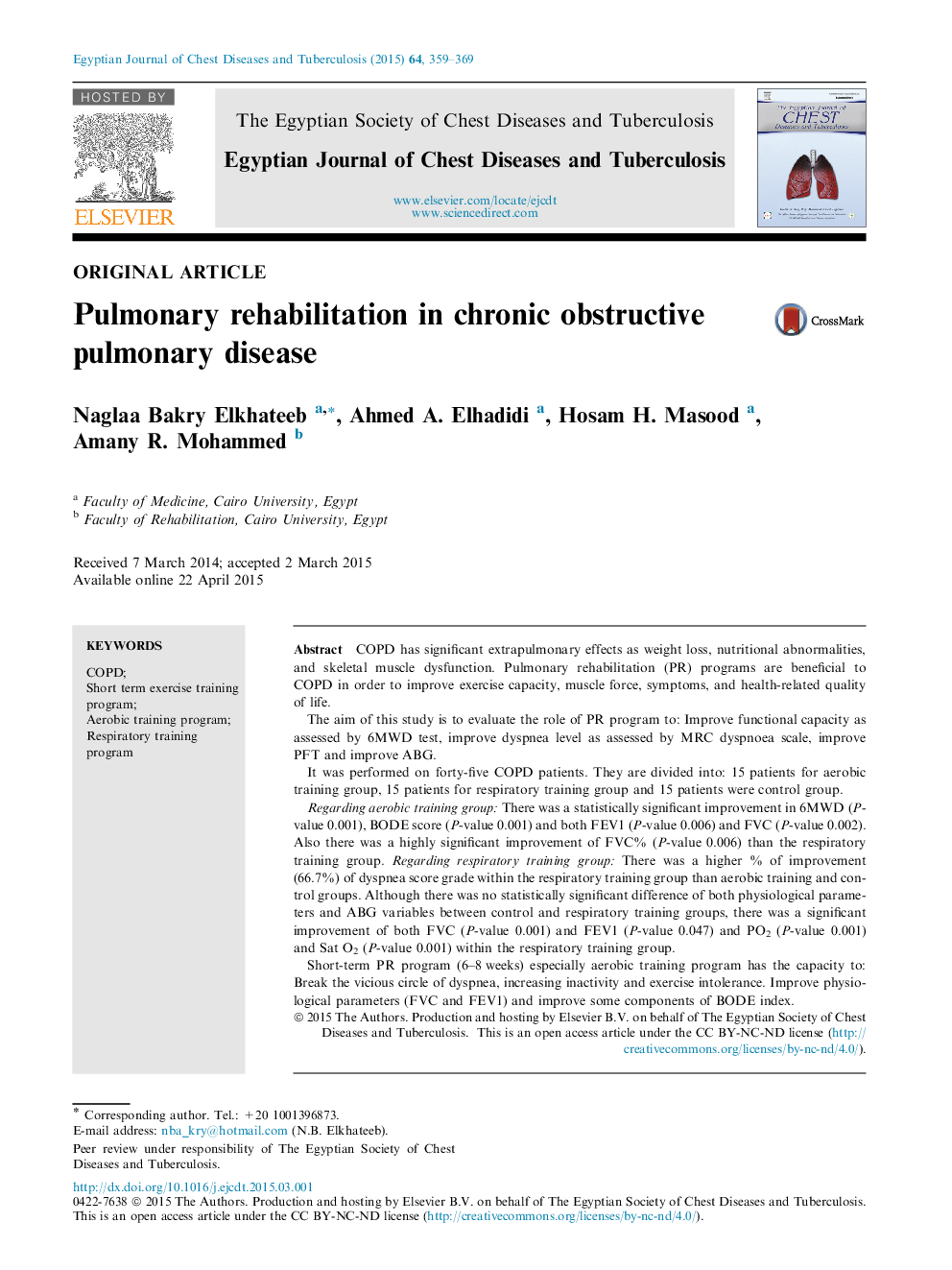| Article ID | Journal | Published Year | Pages | File Type |
|---|---|---|---|---|
| 3399980 | Egyptian Journal of Chest Diseases and Tuberculosis | 2015 | 11 Pages |
COPD has significant extrapulmonary effects as weight loss, nutritional abnormalities, and skeletal muscle dysfunction. Pulmonary rehabilitation (PR) programs are beneficial to COPD in order to improve exercise capacity, muscle force, symptoms, and health-related quality of life.The aim of this study is to evaluate the role of PR program to: Improve functional capacity as assessed by 6MWD test, improve dyspnea level as assessed by MRC dyspnoea scale, improve PFT and improve ABG.It was performed on forty-five COPD patients. They are divided into: 15 patients for aerobic training group, 15 patients for respiratory training group and 15 patients were control group.Regarding aerobic training group: There was a statistically significant improvement in 6MWD (P-value 0.001), BODE score (P-value 0.001) and both FEV1 (P-value 0.006) and FVC (P-value 0.002). Also there was a highly significant improvement of FVC% (P-value 0.006) than the respiratory training group. Regarding respiratory training group: There was a higher % of improvement (66.7%) of dyspnea score grade within the respiratory training group than aerobic training and control groups. Although there was no statistically significant difference of both physiological parameters and ABG variables between control and respiratory training groups, there was a significant improvement of both FVC (P-value 0.001) and FEV1 (P-value 0.047) and PO2 (P-value 0.001) and Sat O2 (P-value 0.001) within the respiratory training group.Short-term PR program (6–8 weeks) especially aerobic training program has the capacity to: Break the vicious circle of dyspnea, increasing inactivity and exercise intolerance. Improve physiological parameters (FVC and FEV1) and improve some components of BODE index.
